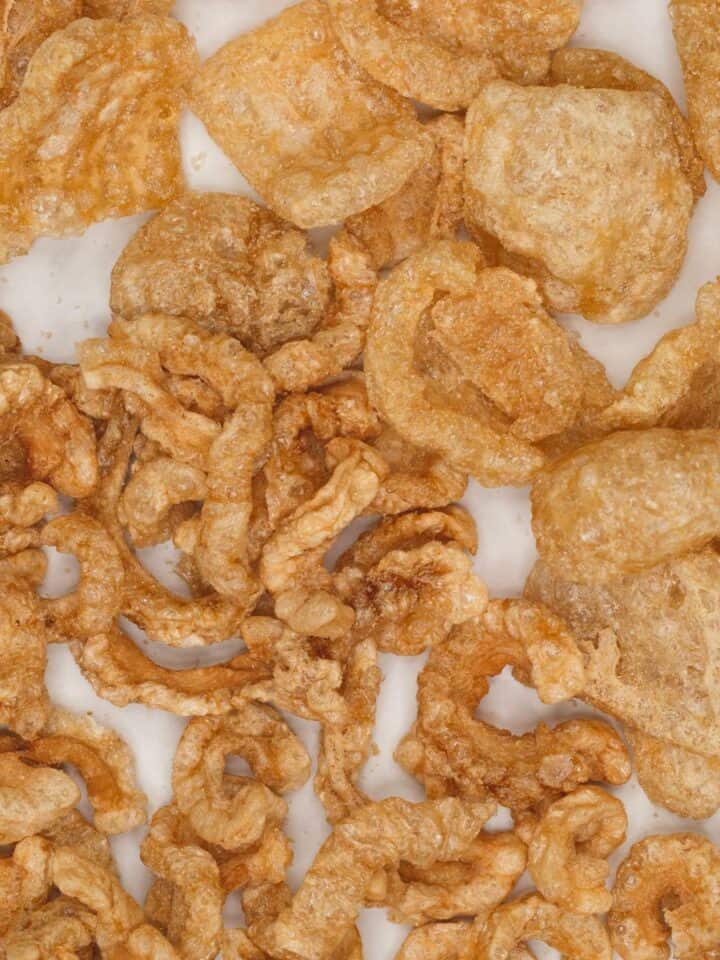Grass jelly is a traditional Asian dessert known for its aromatic herbal notes and refreshing, cooling effect. It has a jelly-like consistency and adds a wonderful aroma to desserts and beverages.

Jump to:
What is grass jelly?
Grass jelly is also known as leaf jelly or herb jelly. It is a traditional Asian dessert made from the leaves and stalks of the Chinese mesona plant, a member of the mint family.
Typically black or dark brown in color, it has a wonderful aroma and a texture like Jell-O. Another variation is green grass jelly, which is notable for its green color. This version has a lighter flavor profile, marked by subtle floral and vegetal undertones.

What does grass jelly taste like?
Grass jelly has a unique taste and a jelly-like consistency. Its flavor is mildly grassy and herbal, with a slight touch of bitterness.
It isn’t sweet by itself, so it’s usually mixed with sweet syrups or sugar to make it taste better. Many like it for its texture and how it goes well with other ingredients.
It's worth noting that grass jelly in cans doesn't quite capture the nuanced flavors of fresh grass jelly. It has a fragrant aroma and light smoky undertone that the canned version just can't match.

What is grass jelly made of?
Grass jelly is made from the aged and slightly oxidized stalks and leaves of the Chinese mesona plant. After harvesting, these plant parts are sun-dried to oxidize them, like how tea leaves are prepared.
When they're good and dry, they're boiled with potassium carbonate for several hours. This step works much like brewing a robust tea, pulling out the plant's essence to create a rich, flavorful liquid.
The potassium carbonate serves as an alkalizing agent that helps break down the plant material and extract its flavors, while also contributing to its characteristic dark color. Its role is similar to the function of lye water in kakanin (Filipino rice cakes), like Pichi-Pichi and Kutsinta, where it gives them a firm and chewy texture.
After boiling, a small amount of starch is sometimes added to thicken the liquid into a jelly-like texture. As the mixture cools and firms up, it takes on that familiar jiggly consistency we associate with grass jelly.
Is grass jelly healthy?
Wikipedia notes that grass jelly mainly consists of carbohydrates and a small amount of protein, with no fat, vitamins, or minerals. It was created by the Hakka people, a specific Chinese group, to cool down after fieldwork.
According to Livestrong, research indicates health benefits like blood pressure regulation and antioxidant effects. Green grass jelly may boost intestinal health, while black grass jelly could support pancreatic health and reduce cholesterol. However, more comprehensive studies are needed.
While its natural form may be beneficial, it's essential to note that grass jelly is often served with sweet syrups or sugary drinks, significantly increasing its caloric and sugar content. Some store-bought versions may also contain additives or preservatives.
If you have a medical condition or are on medication, consult with a healthcare provider before consuming grass jelly. There is limited scientific research supporting these health claims, so seeking professional advice is always best.
Where to find grass jelly
In the U.S., canned grass jelly is readily available at Asian markets and select mainstream grocery stores. Usually preserved in syrup or liquid, it's ready-to-eat and perfect for adding to desserts and drinks.
Grass jelly powder, often available online, offers a convenient way to make the dessert at home. The powder usually consists of the necessary herbal extracts and gelling agents, making it simple to prepare: simply add water and let it set.
Making grass jelly from scratch can be labor-intensive, requiring you to find the specific herbal leaves and go through the boiling and setting process. If you're after convenience, canned or powdered versions may be more suitable.

How to use grass jelly
Grass jelly can serve as a standalone snack, especially when soaked in sweet syrup, but it truly shines as an ingredient in various desserts and beverages. Here are some examples:
- Sago at Gulaman: A Filipino beverage that combines sago, gulaman, arnibal, and sometimes grass jelly.
- Samalamig or Palamig: These are iced drinks made with fruit juices and an assortment of add-ins, such as gulaman, grass jelly, sago pearls, nata de coco, coconut strips, and fruit pieces.
- Grass Jelly Drinks: These refreshing beverages blend grass jelly with a variety of liquids such as herbal teas, fruit juices, or dairy.
- Shaved Ice: Similar to Halo-Halo, this is shaved ice topped with grass jelly cubes, condensed milk, and other sweet ingredients.
- Fruit Bowls: Grass jelly added to a mix of fresh fruits with sweetened beans provide a contrasting texture and slight herbal flavor.

Other ingredient guides you may like

Did you like this post? I would love to know! Your feedback helps me make better recipes. Please rate, review, or comment below. Questions about this post are welcome, too!
Let's connect on Facebook, Instagram, Pinterest, TikTok, Twitter, and Youtube. Be sure to tag me when you try any of my recipes @recipesbynora!











Dara
Is grass jelly made of gelatin or agar agar? Thanks
Nora Rey
Hi Dara, Great question! Grass jelly isn't made from gelatin or agar agar. It's made from the stalks and leaves of the Chinese Mesona plant, then boiled with an alkalizing agent, potassium carbonate, to extract flavors and give the jelly its dark color. Sometimes they even toss in a bit of starch to get that jelly-like consistency. Fun fact: the way potassium carbonate works in grass jelly is kinda like how lye water works in some Filipino rice cakes, making them firm and chewy. Hope that clears things up!